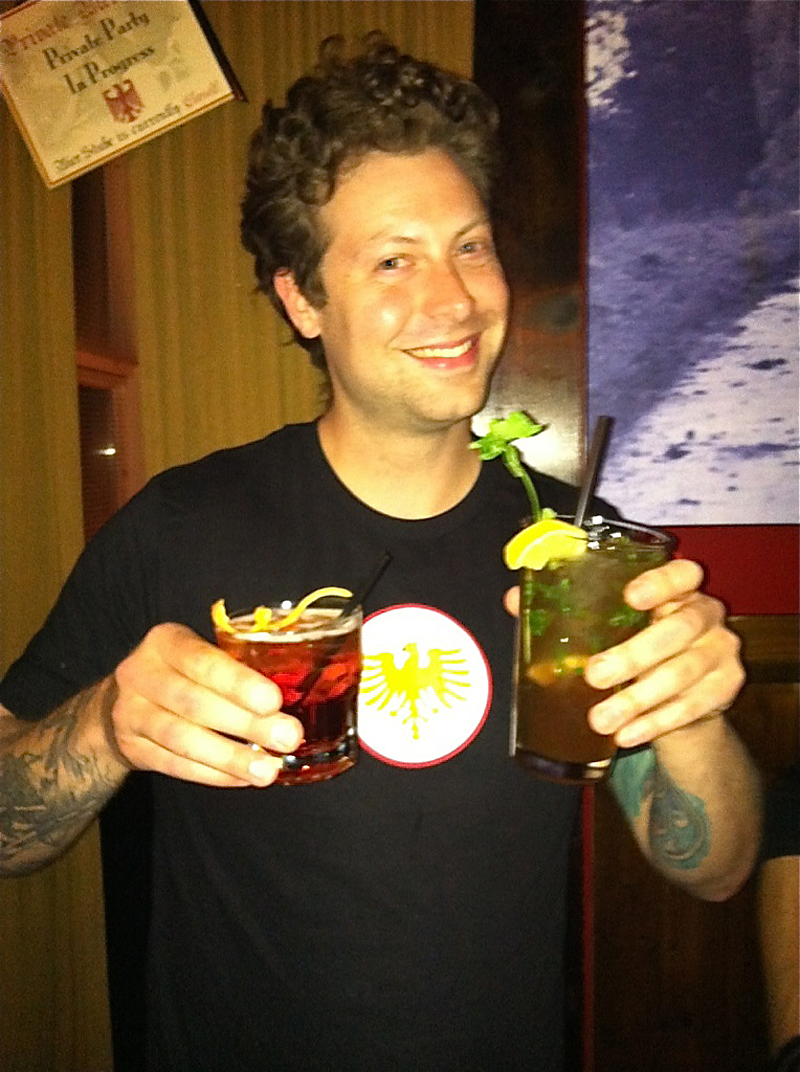With just under two weeks to go before graduate exit exams become a harsh reality, I join the ranks of the Academic Undead: preparing for finals and subsisting on some bizarre combination of sugar and caffeinated beverages. I was reminded today that coffee is one of the most traded commodities in the world, second only to oil, and in my current state I find that easy to believe. Not all coffee drinkers are caffeine junkies (although, it does sort of come with the territory), and with the exception of intense periods of study, I would contest that I generally drink coffee for the taste more than for the buzz. But for all those of you who prefer less coffee and more kick… well, do I have a destination for you.Red Cup Espresso in West Seattle is completely deserving of the attention of anyone who likes coffee. They serve good coffee: more to be said on that in a minute. But first up, they also serve “white coffee.” I’d heard of this before (and occasionally seen it advertised in passing by a certain type of espresso stand I boycott on a whole variety of principles), but I’d never run across it in a coffee shop before. To understand white coffee, you need to have a basic understanding of how that cup of coffee in your hands got there. So here we go, Coffee 098 (that’ll be the Community College version, in case you wondered)… Coffee beans do not start out looking like the ones you purchase by the pound off the shelf. In fact, they start out actually growing as fruit on a tree. (That’s right: fruit. Take that, USDA food pyramid! The college diet now meets your standards.) Coffee fruit looks like this.As it ripens, it turns a cherry red color, and is eventually harvested. There are various processes for harvesting and processing coffee, but what’s important to know is that within the coffee cherry, there are the coffee beans, and then there is the stuff that is not coffee bean. The goal of processing is to get the coffee beans out of the rest of the coffee fruit so that they can be roasted and turned into what you find in the store. Light and dark coffees result simply from the amount of time coffee beans spend roasting, and here’s where white coffee comes in: the darker a roast (the longer a coffee has been roasted), the lower the caffeine content. White coffee is coffee that has been roasted only to the “yellow” stage, which means, among other things, that it doesn’t taste much like roasted coffee, and that its caffeine content is considerably higher. Reportedly, close to 30% higher. I’m no expert on any of this, and am already so far in over my head in this discussion that I think it best that I don’t try to evaluate what I drank today, or guess what makes a “good” white coffee, since all the things I normally look for in a coffee are topics null and void here. White coffee tastes a little like a protein shake, and I have an annoying level of energy now. Which could be because of the white coffee, or because of the white coffee following regular coffee. End of analysis.White coffee aside, I like Red Cup Espresso quite a bit. Within the realm of family owned and operated businesses, this one is impressive: Eric Thomas of Solar Epiphany (the company responsible for the solar panels providing about 20% of Red Cup’s power) is the husband of Red Cup’s owner, Trisha, who is the daughter of Deborah, owner of (Red Cup’s coffee supplier) Roast House Coffee in Spokane. Not surprising, this being the business milieu, that the coffee is carefully sourced by the roastery and then well-crafted into beverages on the store level. The atmosphere is relaxed, the owners are extremely friendly, and the opportunity to temporarily sit down in the comfy armchair of a room filled with natural light is sometimes just exactly what a day needs. So even if you’re not in it for the caffeine, if your afternoon finds you in West Seattle, stop by and enjoy a minute of casual conversation and time-out in your day.
More Stories From This Author
For 50 years, Zeke’s off US 2 has served delicious burgers
It’s been a popular pit stop in Gold Bar for skiers and hikers, and the same family still runs it.
By
Evan Thompson • June 6, 2019 11:05 am
With ‘Game of Thrones’ ending, it’s time for a proper feast
How to make a meal inspired by the Lannisters’ and Starks’ world, fit for the King in the North.
By
Ben Watanabe • May 15, 2019 1:30 am
Stash Box: 2016-2019
Time to roll one for the road …
By
Meagan Angus • February 26, 2019 3:15 pm







